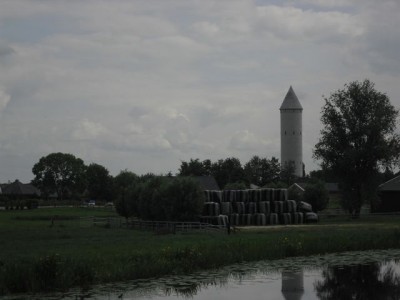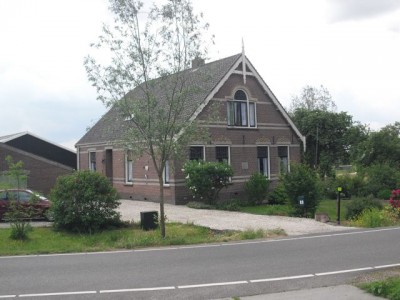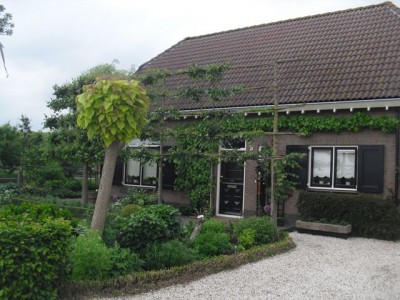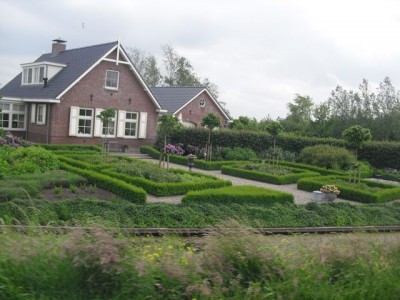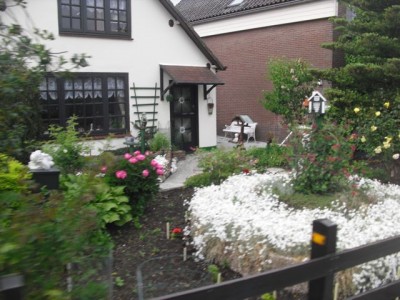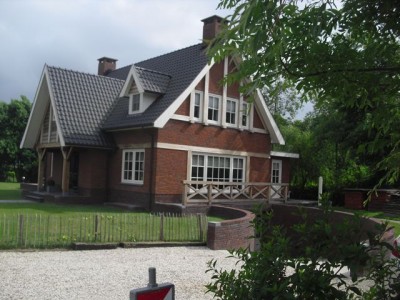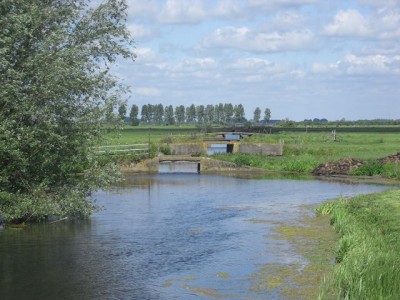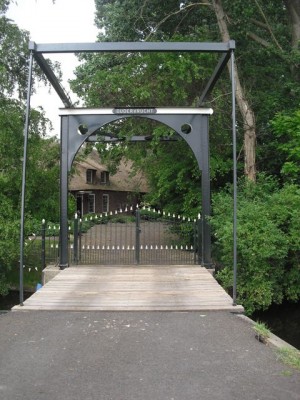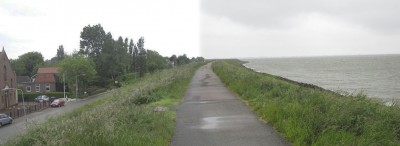That’s pronounced “my-ya” (except the second syllable in Dutch sounds different.) The Meije is the quaint little road that leads to my sister- and brother-in-law’s dairy farm near Bodegraven in The Netherlands. I became very familiar with the road during our visit there in May this year; very beautiful place.
Sorry for the soundless video; I did add a few comments along the way as I drove, but the camera’s mic didn’t pick it up very well. One of these days I’ll take the time to figure out how to add commentary and a soundtrack, but until then the visual aspect is all we get. Use your imagination!
Meije is also the name of a collection of homes, a church, a school, and a coffee shop that could maybe be called “a village” but I’d stop short of that (if you watch through to the end of the video, Meije is where I stopped recording & turned the car around.) But the road is what most people in the area think of when they hear the word. Le Meije also happens to be a peak in the French Alps, but I doubt the folks that live along the Meije in Holland hear much about that one, nor care much about it.
As roads go, the Meije is about as narrow as they get, with barely enough room for one-way traffic, but it still accommodates two-way traffic. Making matters worse more interesting is the fact that many of the houses have hedges & fences right up to the road, and in other places there is a drop-off one one side or the other with water at the bottom; no good-old-fashioned WPA ditches like you find in South Dakota! When another vehicle approaches from the opposite direction, both drivers have to move as far to the right as possible. Often though you’ll find yourself head-to-head with a truck or tractor, and there just isn’t room for both of you; in those cases it’s customary for the smaller of the two vehicles to back up and into a driveway to allow the other to pass by. I had it happen once, but thankfully, most cars are small and there are lots of driveways and several bump-outs along the way to make it a little easier.
This photo features het Potlood, (the Pencil) which is a water tower that services the village and the homes along the Meije. It’s a well-known landmark that can be seen from many miles distant; very unique bit of architecture!
The area is historically a farming community. Most all of the houses along the road were at one time farm houses, but the area is becoming slightly more urban, or bedroom community-ish; with the popularity of the road, many of the houses are no longer occupied by farmers. Even though the working farms are fewer these days, their presence is unmistakable, evidenced by the “dairy farm” odor… There’s no escaping the smell of cows and their, um, byproducts. It’s no wonder when you consider how many head of cattle inhabit the area and how the the farmers deal with the waste from all of them.
From what I gathered, most of the houses along the Meije were built in the early 1900’s, and display similar construction methods; brick exterior, timber roofs with either tile or reed (thatch) roofing. Many of the buildings, while quaint & charming and all that, aren’t much to write home about on the inside. The soil in the area is very soft, and as a result the foundations of many homes aren’t very stable. Dick & Michelle’s house has wall that has settled considerably, and I saw several other buildings along the road that appeared to have off-kilter walls or the whole house was slightly askew. That doesn’t seem to bother the owners though; they keep their places up as would any fastidious Dutchman. Some are definitely nicer than others, and some residents put a great deal of effort into the gardens along the road, which only adds to the enjoyment of the drive. There are few basements, for obvious reasons.
The GPS unit that we borrowed showed that the area was about three meters below sea level. About 27 percent of the Netherlands is below sea level; it’s land that has been reclaimed by the building of dikes to push & hold back the sea. The area around the Meije is part of that reclaimed land, and is about as flat as a pool table. The different properties that line the road are separated by canals rather than fences. Most of the canals I saw were about three meters wide and probably about that deep in the center.
It had been fairly dry in the months preceding our visit, so the water level was down a bit, but there was always plenty of water in the canals and plenty of waterfowl around; ducks, geese, swans and storks. One interesting thing with the canals along the road; on the north side of the road (left in the video) is a larger canal that connects to a small lake, and the water level is several feet higher than the canals on the south side of the road. I suppose the road acted as a levee separating the two. In many places the canal runs right next to the road, which required bridges to be built on many driveways to allow access. Some of the homes even sported drawbridges at the road! How cool is that?
When viewing the area from above, as on Google Maps or Google Earth, you can see that the canals run parallel to one another to form fields in the shape of long rectangles. It was surprising to me to see how many farms & homes were packed along the road; in rural parts of the US there can be pretty large distances between farm places.
The Meije is far from the coast and any sizable dikes, but one day Yvonne & I did trek northward to visit the towns where her mom & dad lived when they were younger. Her mom lived in the town of Andijk, which is pronounced “on-dike” and is very literally built right on — or inside — the dike. I was pretty amazed at the dike; it’s an earthen structure that rises a good 30 feet or more from the road’s surface at its foot, but on the other side the water is only about 10 feet below the crown of the dike.
This is two photos stitched together (rather poorly; the light was very different in the two exposures and I couldn’t get the clouds quite right!) to show the difference between the two sides. The town would be completely submerged if not for the dike. A tremendous degree of confidence in the integrity of the dike is on display in Andijk; there are two 100-plus year old churches within a stone’s throw of the dike as well as several hundred homes.
This is getting a bit long… I started writing the post a month or so after returning, but kept adding a little bit here & there, even though I didn’t intend for it to turn into a travelogue. It really was a great trip, especially our time spent touring Germany. And our day trip to the Swiss Alps… Pretty sure Heaven will look very much like what we saw there! Didn’t enjoy the language problem though; will not be returning to Europe until I know a enough German and Dutch to get by. Will have to post some more photos sometime.
